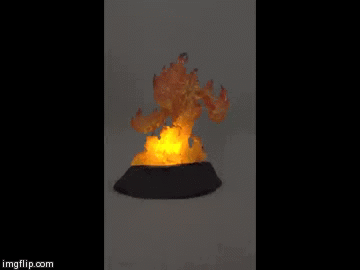The core of this project is this thing:
It's an itty-bitty, 2"x2"x2" display case made for golf balls. I got a six pack of them from Amazon, but I bet you can get them individually at sporting goods stores for under $2.
The chief draw for these is that they slide apart,...
...because the fun of a mini for a clear monster whose main power is engulfing PCs is in actually putting hero minis inside.
I could have used these as is, but they are a little too platonically cubic. I wanted some sort of texture to show that it was made of organic goop of some kind. I considered substances like clear caulk, but instead I finally decided on Gloss Gel Medium, a finishing product for artists made by Liquitex that dries clear and with a textured surface. $6 after the requisite 40% off coupon at Hobby Lobby for a fair sized bottle, which I decided was cheap enough if I use it for other modeling projects. I could use it for other oozes, for example, and it seems like it would work for choppy water as well.
Separate the cube as shown above, then sand the surfaces you plan to treat so the Gloss sticks. Wash afterwards to remove plastic dust and allow to dry thoroughly. I painted both sides of the bottom face with several coats of black paint, then added the gel medium to the top face of the black surface (which is to say, the "floor" inside the cube).
 |
| I had glued the 2" fender washer to the base before sanding and washing, but I recommend doing so afterwards instead. The washer makes the cube much more stable. |
A layer of Future shine or some other finish on the bottom is a good idea to keep it from scuffing. You could paint Future on the rest of the mini too, but it's not really necessary; the Gloss Medium is shiny and resilient enough on its own.
 |
| Large enough to comfortably accommodate one comparison viking! |
Since I still have five of these golf ball display cases, I can make more of these things. Would anyone be interested in getting one as a trade, or possibly some sort of future giveaway?













